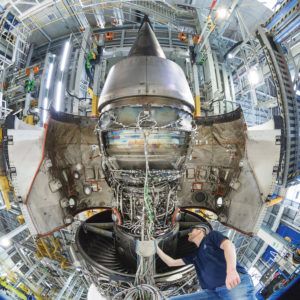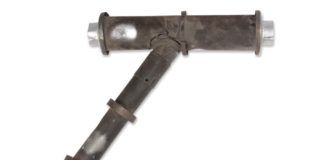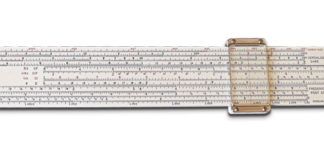Making the rounds on the canned news circuit recently was the EPA announcing it’s going after emission controls for aviation. Oh boy.
As an old hot rod auto journalist, hearing the Environmental Protection Agency announce a new interest in aviation twangs a deeply ingrained trip wire. I can’t help it, being just barely old enough to have witnessed the transition from completely unregulated to ever-tightening emission controls on ground vehicles, and now here I am beginning to see the same movement in aviation.

Sort of, but more on that in a minute.
Before you read “old hot rod auto journalist” and think of a hairy Cro-Magnon with flames shooting out his zoomies, I’m not so bad as all that. OK, maybe a little if no one is watching, but time in the auto industry taught me there are often many unexpected results of cleaning up one’s act. Most of them are rather good, a few are a pain in the neck and all of them cost more money, sometimes far more money, than the old way. Which in our part of the internal combustion world would be a leaking Marvel-Schebler and two matches in a windstorm.
So let’s agree emission controls are ultimately a good thing, especially if it’s everybody else having to comply. For sure the air is cleaner, and we’ve all discovered breathing is a good thing. But automotive emission controls also drove a revolution in engine design and control that has brought us street-legal, clean-running engines making 800 horsepower while running on 91-octane junk fuel and capable of idling smoothly all day in the staging lanes of the local drag strip or rush hour traffic.
It all came about because, try as they might, Detroit proved the job couldn’t be done with a Holley four-barrel carburetor, three dashpots and seven miles of vacuum hose. It took digital control—engine management computers—to get piston engines running in an air/fuel ratio range sufficiently narrow that catalytic converters could clean up the rest. And that, it seems rather obvious, isn’t going to happen as long as some dude in a red and black Pendleton has his hand on a mixture twiddle knob.
Thankfully, that’s not what the EPA is talking about, so far. The recently announced initiatives apply only to new, certified, turbine aircraft somewhere just north of aviation’s somehow magic 12,500-pound weight distinction. No one is even talking about piston engines or retrofitting emission hardware of any kind. It seems the sole concept in cleaning up piston engines of any age is eliminating lead in avgas. Nothing new there.
But one item cited is a reduction in CO2 “emissions” for the upcoming class of emission-regulated turbines. Which begs the reminder that CO2 is not a secondary or tertiary by-product of engine exhaust. It, along with water, is the main result of combusting a hydrocarbon fuel. In short, a CO2 limit is a fuel consumption limit as the amount of CO2 in engine exhaust is directly proportional to the amount of fuel burned. Just keep that in mind as the discussion in aviation exhaust “emissions” continues.
For we Experimental enthusiasts the obvious disruption now imaginable is retrofit devices to our existing engines, but there’s little chance of those. The technical issues are sufficiently overwhelming, and the emission reductions compared to commercial aircraft, cars and industry so minuscule there’s little point in getting us to fit PCV valves to our Lycomings. Better to simply get the lead out of the gas. But what about future engines? Again, Experimental aircraft are likely seen as too fringe to matter, but certified piston engines…might be something the EPA eventually takes a look at before we all supposedly go electric. Remember, they’re a bureaucracy and thus self-fulfilling as any living organism need be to continue its existence. Seeing how nearly impossible it is already to certify a clean-sheet-design engine, adding emission compliance with its extra hardware and (especially) certification testing would seem an impassable choke on any new engine.
That, of course, would be more than a shame as the revolution in automotive engine design pioneered from the 1960s to the 1990s reinvented auto engines much for the better. With no such regulatory impetus and not enough heat in the market to update our current crop of legacy engines, it appears our future propulsion will look much like today’s. Such stability is certainly less expensive in the short term, and don’t think I’m complaining. Today’s engines are a known quantity and, amazing as it seems, “affordable.” At least compared to new engines that could realistically be expected to jump from the air-cooled 1940s to the electronic, liquid-cooled 2000s in one step.
In the meantime, Experimental aircraft engines have no doubt unwittingly inverted the automotive model of emissions improving engines. That is, emission regulations forced the development of electronic ignition, electronic fuel injection and a host of other mechanical and design hardware in order to reduce emissions in cars. Today, down at the local airport, we have rather robust development and, most importantly, enthusiastic adoption by individual plane builders, of electronic ignition and fuel systems to improve performance and fuel economy while reducing maintenance costs. Such engine management systems are already off-the-shelf hardware from outfits such as EFII and SDS. Emissions are no doubt being lowered in the process because the digital control of fuel and spark is so much more efficient than manually by a poorly trained, distracted pilot (or not at all in the case of magneto ignition). If you needed another reason to go electronic on your next build, there you are: it’s cleaner.
And so another demand has been placed on aviation by those making the rules. It has been many decades in the coming and has only just made a toehold in our neighborhood. Best to keep an eye on it.














In all of this development for electronically controlled GA engines, are emissions even being measured?
Thoroughly agree. And electric isn’t any cleaner than Internal Combustion. It just moves the pollution to a power plant somewhere else. Also, producing Lithium batteries produces an incredible amount of pollution – a new car’s batteries represent 80K miles of IC driving in pollution. An airplane’s batteries wouldn’t be any better. And, not even mentioning the extremely disparate power densities of AvGas vs. Lithium batteries. And, Lithium fire hazard is at least as bad as AvGas.
One answer is hydrogen powered vehicles. The only exhaust would be H2O. Unfortunately, you only get 1 watt of power out of H2 combustion for every 2 watts you put into making it.
That said, I think the EPA push is more about expanding their kingdom than about clean air.